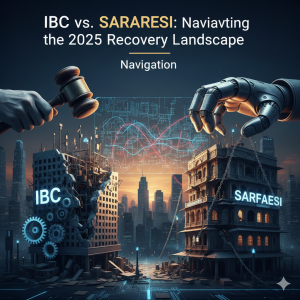Introduction
Revenue disputes — whether about land mutation, demarcation, occupancy rights, or entries in land records — often reach appellate authorities like the Sub-Divisional Officer (SDO) or the Collector. A well-drafted Revenue Appeal can make all the difference between success and dismissal. In this blog, we break down the key steps and strategies to draft an effective appeal in revenue matters under state-specific Revenue Codes (such as the Gujarat Land Revenue Code, Maharashtra Land Revenue Code, etc.).
Understanding the Nature of Revenue Appeals
A revenue appeal is a statutory remedy provided to challenge the decisions of subordinate revenue officers — like the Talati, Circle Officer, or Mamlatdar — before higher authorities such as the SDO, Collector, or even the Revenue Tribunal.
Common orders that are appealable include:
- Rejection of mutation entries
- Orders on land measurement/demarcation
- Decisions on encroachments
- Record correction disputes (VF 6, VF 7, VF 8A)
- Denial of tenancy or occupancy rights
Structure of a Strong Revenue Appeal
1. Title & Authority Heading
Begin by clearly stating the name of the appellate authority (e.g., Before the Honourable Collector, Ahmedabad).
Mention the Revenue Appeal Number, if already assigned.
2. Cause Title
Appellant’s full name, address, and designation.
Respondent’s details — usually the original complainant and the revenue officer who passed the impugned order.
3. Details of the Impugned Order
Clearly mention:
- Date of the order
- Order number
- Name and designation of the officer who passed it
- Subject matter (e.g., “Rejection of mutation entry No. _ related to Survey No. _”)
4. Jurisdiction and Limitation
- State that the appeal is being filed within the prescribed time limit (usually 60 days unless extended).
- Confirm that the appellate authority has jurisdiction.
Essential Grounds of Appeal
Draft specific, legally sound grounds, such as:
- Violation of Natural Justice: No notice or hearing was given before the order.
- Incorrect Application of Law: The officer misapplied provisions of the Land Revenue Code.
- No Evidence or Perverse Findings: The findings are not supported by documents, records, or inspection reports.
- Improper Consideration of Records: Relevant entries (7/12 extract, ownership records, court decree) were ignored.
- Bias or Malafide Intent: If there’s a clear pattern of prejudice or illegality.
Tip: Always back each ground with reference to documents, annexures, and legal provisions.
Reliefs Sought
In the final section of the appeal, request:
- Setting aside or quashing the impugned order.
- Restoration or correction of land records (e.g., reinstate mutation).
- Interim relief, if urgent — such as a stay on execution or mutation.
Annexures and Documents
Attach certified copies of:
- The impugned order
- Original application and reply (if any)
- Relevant revenue records (7/12, VF 6, map, etc.)
- Any prior court orders
- Photographs/site inspection reports (if relevant)
Pro Tips for Success
1. Stay Procedural – Use correct format, margins, and proper heading as per the state revenue manual.
2. Be Clear and Concise – Avoid lengthy arguments in the main body; keep it to relevant facts and legal points.
3. Support With Precedents – Cite similar orders or judgments from Revenue Tribunals or High Courts.
4. Index Everything – Create a neat index of annexures and cross-reference each in the appeal.
5. Verification & Affidavit – Conclude with a proper verification clause and affidavit, if required.
Conclusion
Drafting a revenue appeal is not just about presenting your grievance — it’s about building a legally persuasive, evidence-backed case within the framework of the Land Revenue Code. Whether before the SDO or the Collector, clarity, compliance, and legal reasoning are the keys to success.
If you’re an advocate or a party in a revenue dispute, make sure your drafting reflects legal merit, procedural correctness, and factual clarity. A good draft can significantly influence the outcome, even before the oral hearing begins.



